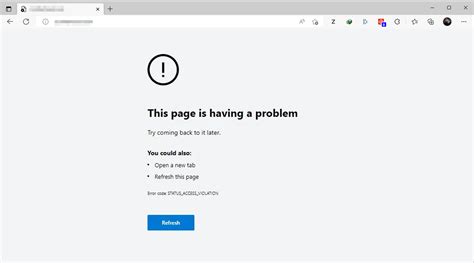Understanding Stack Frame Access Violations in Solana

As developers, we’re used to writing efficient code that leverages the optimized memory management provided by the CPU. However, when working on blockchain projects like Solana, errors can occur due to various reasons. In this article, we’ll delve into why you might be encountering a stack frame access violation despite staying within your stack and heap limits.
Stack Frame Access Violation (SFAV)
In computer science, a stack frame is a temporary structure used to manage function calls. Each time a function is called, it creates a new stack frame that contains the local variables of the function. When the function returns, the stack frame is cleared up, and the memory is reclaimed.
A stack frame access violation occurs when a program attempts to access memory outside its allocated range on the stack. This can happen in two ways:
- Stack Overflow: If a function’s stack size exceeds the available stack space, it leads to an overflow error.
- Stack Underflow: When a variable is pushed onto the stack too many times without sufficient stack space, it causes an underflow.
Why Solana’s Stack Size Limits Might Be Exceeding Your Heap Space
In Solana, you have a limited amount of memory available on the blockchain. To prevent excessive memory usage, the platform imposes heap size limits for each user account. If your program pushes too many stack frames or variables onto the heap without enough space to store them, it may exceed these limits.
Common Causes of SFAV in Solana
Here are some common reasons you might encounter a stack frame access violation:
- Insufficient Heap Space: When a function tries to push too many stack frames or variables onto the heap, it may exceed the available memory space.
- Incorrect Variable Size: If your program pushes large variables onto the heap without enough space to store them, it can lead to underflows and SFAVs.
- Stack Frame Management Issues: Poor management of function calls can cause stack frames to be pushed onto the heap unnecessarily or with insufficient size.
Tips for Avoiding SFAVs in Solana
To prevent SFAVs in your program:
- Use Correctly Sized Variables: Make sure you’re pushing variables onto the heap with enough space to store them.
- Manage Function Calls Efficiently: Optimize function calls by minimizing the number of stack frames created and using the correct parameter types.
- Monitor Heap Usage: Keep an eye on your program’s memory usage and adjust your code accordingly.
By understanding why SFAVs occur in Solana and following these tips, you can write more efficient and reliable code to ensure a smooth user experience for your blockchain project.


